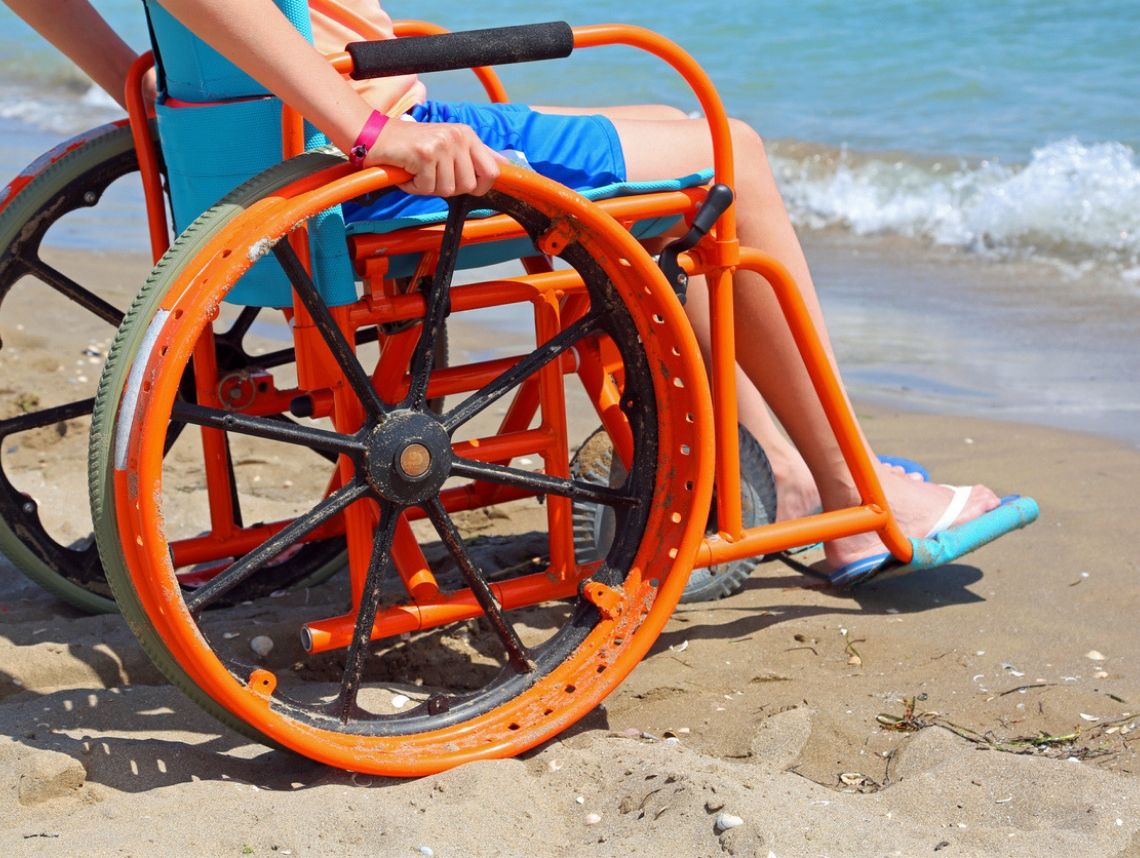Learning that a child has a serious medical diagnosis such as muscular dystrophy is one of the most challenging events any family will experience. We know every parent in this situation will have anxiety, fears, and questions about how to treat this condition best and care for their child. One of the essential steps that anyone can take is to educate themselves as much as possible about this condition and learn about the available options for care and therapy.
This comprehensive guide can help families and loved ones understand pediatric muscular dystrophy, including the causes, treatment options, and how to meet at-home care needs for a child. Our goal is to empower you to take a proactive role as a caregiver to achieve the best possible outcome as a family.
What is muscular dystrophy?
Muscular dystrophy (MD) is a degenerative condition that causes progressive weakness and loss of muscle mass. There is currently no cure for MD and as the illness progresses, it becomes more difficult for the patient to move. They will gradually lose their ability to walk, sit upright, and stand up. In some cases, it can also affect the muscles that assist the body in breathing, as well as those in the heart which can cause MD to be life-threatening.
In pediatric cases, children may begin to develop normally, but movement problems can become apparent later. When the condition develops during childhood, it’s usually diagnosed between the ages of three and six.
5 Common Types of Muscular Dystrophy
According to the National Institute of Health, more than 30 distinct types of muscular dystrophy exist. Common types diagnosed in pediatric cases include:
1. Congenital Muscular Dystrophy
Congenital MD describes any MD that develops in the womb and is usually present at birth. Parents often see signs around age two when children show difficulty sitting up, raising their arms, crawling, or standing up.
2. Duchenne Muscular Dystrophy
Duchenne muscular dystrophy is the most common type of pediatric MD, typically affecting boys. The symptoms of Duchenne MD usually start by affecting the hips between the ages of two and six. By the time the child is a teenager, MD will typically affect the heart and lungs.
3. Emery-Dreifuss Muscular Dystrophy
This type of muscular dystrophy also begins during childhood but only affects boys. Symptoms are less severe than those of Duchenne MD.
4. Limb-Girdle Muscular Dystrophy
Also known as LGMD, limb-girdle muscular dystrophy also starts in the hips, and symptoms begin to appear during the teenage years.
5. Facioscapulohumeral Muscular Dystrophy
This type of muscular dystrophy primarily affects the muscles of the face, shoulders, and upper arms. Symptoms generally show up during adolescence.
What causes muscular dystrophy in children?
Muscular dystrophy is caused by genetic mutations that prevent the production of proteins that muscles need to build and maintain muscle mass.
Muscular Dystrophy Risk Factors
MD is a hereditary condition, so anyone with a family history of muscular dystrophy has an increased chance of developing it.
Early Signs of Muscular Dystrophy
Parents and family often recognize early signs of muscular dystrophy and can help doctors diagnose this condition as early as possible. Early indications of muscular dystrophy include:
- Clumsy movements
- Waddling when walking
- Curvature of the spine
- Falling frequently
- Walking on toes
- Speech delays
- Facial weakness
- Large calves
Muscular Dystrophy Symptoms in Children
Specific symptoms of children diagnosed with muscular dystrophy include:
- Muscular pain
- Muscle stiffness
- Difficulty sitting down or standing up
- Breathing difficulties
- Difficulty swallowing
Diagnosing Muscular Dystrophy
Doctors usually discuss symptoms, review the child’s and family’s medical history, and perform a physical examination to diagnose pediatric muscular dystrophy. Additional tests, such as biopsy, electromyography, or genetic testing, may also be ordered to confirm the diagnosis.
Muscular Dystrophy Treatment Options
Treatment options for muscular dystrophy include medication to slow the progression of the disease, as well as physical therapy exercises. In some cases, braces may be necessary to help prevent deformity.
Doctors may also recommend using a cane or a walker when the condition progresses to the point where independent movement is disrupted. Advanced muscular dystrophy often requires a wheelchair and physical therapy.
Caring for a Child with Muscular Dystrophy
Muscular dystrophy is a lifelong condition with ongoing care needs. These practical steps can help anyone improve the quality of life at home for children living with muscular dystrophy.
1. Learn about your child’s specific type of muscular dystrophy.
Some types of MD affect children; others affect adults, and some only affect boys. Learning about your child’s type of MD will help you recognize the worsening of symptoms or other issues that may arise so that you’re prepared to provide the care they need. The Muscular Dystrophy Association is a great resource to get you started.
2. Learn the exact dosage of medication needed.
Your child’s pediatrician may prescribe different medications. Some may be designed to relieve pain, while others may be intended to slow the progression of the illness. Memorize the dosage instructions and pay attention to how your child reacts. If you notice side effects, discuss them with your pediatrician.
3. Engage your child in range of motion exercises.
Your child’s physical therapist can show you different types of exercises. It’s important to follow the diagnosis-specific recommendations of your child’s medical team. Doing these exercises will help ensure your child’s muscles remain as strong and flexible as possible for as long as possible. This may also help prevent muscle deformities.
4. Use gentle therapeutic massage techniques.
In addition to heat therapy, massaging areas affected by MD can help alleviate pain and muscle stiffness.
5. Give your child a sleeping mask.
Certain types of muscular dystrophy can make it difficult for children to close their eyes fully. If this is the case with your child, a sleeping mask will help promote more restful sleep.
6. Make it easier for your child to move around the home.
You can do this by replacing the box spring on your child’s bed with one that has a lower profile, replacing door knobs with lever handles, widening doorways if your child uses a wheelchair, installing a wheelchair accessible shower, and placing their favorite toys, books, and clothing on low shelves that are easy to reach. If you live in a multi-level home, move their bedroom to the first floor.
How MD Affects a Child’s Life
Muscular dystrophy can affect a person’s sense of independence and cause feelings of isolation. This is especially true when children compare themselves to peers. For these reasons, it’s good to be aware of aids that may provide more mobility, such as braces. In addition, support groups can help children deal with the emotional aspect of living with the condition.
Depending on the severity of the condition, muscular dystrophy can also affect the internal organs, which may lead to health complications. This can include an inability to swallow food, which requires a feeding tube or other nutritional support. Another complication is breathing difficulties that require the support of a ventilator.
When to Start Home Care for a Child With MD
There are many reasons to consider pediatric home care for a child with muscular dystrophy. It allows children to remain at home while undergoing physical, occupational, or speech therapy, keeping them in a familiar, comfortable environment. It also provides parents with assistance or respite, which is essential when a child requires 24/7 care. This is particularly beneficial for households with multiple children or parents who cannot miss work to stay home with their child.
Contact Care Options for Kids for Home Health Care
It can be hard to balance your time between work, home, and caring for a child. That’s why our team of skilled professionals at Care Options for Kids is here to help. We have been enforcing precautionary measures and following the Centers For Disease Control (CDC) guidelines for COVID-19 to ensure the safety and health of our clients and employees.
Our home health care services offer support one-on-one in the comfort of your home. We refer loving and competent nurses to provide customized care for families — from a few hours a day to around-the-clock supervision. Contact us directly to speak with a home health care professional or request a free in-home assessment. Together we can determine the best plan of action to keep your loved ones happy and healthy.
If you or a loved one are considering pediatric home health care services, contact the caring staff at Care Options for Kids. Call today at (888) 592-5855.






